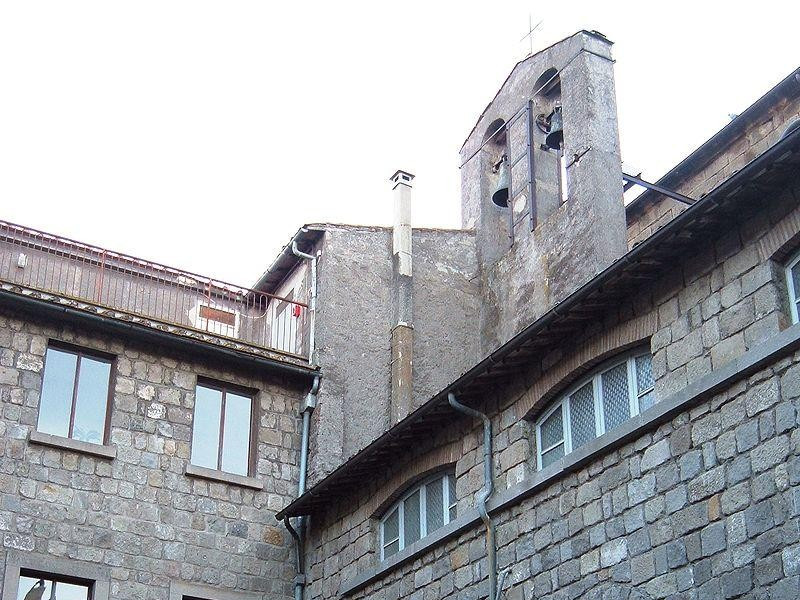Chiesa di Santa Maria Nuova
St. Mary New's Church, in Romanesque style, is located in the historic center of Viterbo, not far from the medieval quarter of St. Pellegrino and the St. Lawrence's Sqaure. It is home to the oldest parish in the city, dating back to 1217. The Church was a place beloved by the city to the most important meetings and for the preservation of the treasure and archive citizens, as well as headquarters of Bifolchi's Art and burial of noble families. The purity of its Lombard-Romanesque style was contaminated, between the seventeenth century and the nineteenth century, by gross additions and changes. Only the restorations carried out from 1907 to 1914 brought the Church to its former beauty. The facade is simple, open by three mullioned windows and a doorway topped by a bezel. In the left corner, there is a hexagonal pulpit dedicated to Thomas Aquinas, who in 1266 preached often in this Church on request of Pope Clement IV, and next it open the side door with ornamental pattern with a diamond tip. The interior is divided into three naves by two rows of six columns and two half columns with different monolithic capitals. The ceiling is trussed, decorated with tiles and beams painted in tempera with floral patterns (1460-1490). Down the aisle, between arms and memorial stones, there is the burial of the man of letters Orazio Carnevalini, indicated by the marble bust sculpted by Pietro Tenerani. The Church is home to a veritable art gallery from the fourteenth to the sixteenth century: a table depicting the Madonna and Child with St. Bartholomew and St. Lawrence; followed by two large frescoed niches; under the arch, medallions depicted the saints; archivolt, the emblem of the Monaldeschi; on the right altar, a Enthroned Madonna with the Child Jesus and the entrance to the sacristy, a marble tabernacle. Bordered by a bronze balustrade by Carlo Canestrari depicting the Last Supper (1964), there is the main altar of the twelfth century and the contemporary ciborium. Two staircases to the sides of the presbytery lead to a crypt chapel, where is located the baptismal font of granite and travertine, work by De Alexandris brothers (1961). On the left, there is a triptych of the Roman school of the thirteenth century, painted on leather, laying down the center the image of Christ blessing between the Virgin and St. John, discovered in 1283 by some farmers plowing a field at the baths. On top of the nave, a large Gothic tabernacle three cusps, which frames a modern Pietà in peperino (1958), still by Canestrari, buried there. A staircase leads to the tiny Lombard cloister (part of a pre-existing early Christian building), brought to light thanks to a long restoration. Bows and brick, are supported by slender pillars ending in capitals shaped crutch. The shorter side, opposite the entrance, instead presents three large and massive Romanesque arches supported by pillars.


